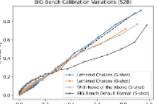This robot can untangle a tangle of headphone cables in two clicks
1. Reidemeister Move: This is the first action during the tidy-up, where the two grippers grab the knots at the ends and pull them towards each other to reveal the knots in the thread.
2. Shaking: Shaking the tangled wire has two main uses: one is to find the ends by shaking them when they are difficult to find and cannot be moved by the Reidemeister, and the other is to loosen the knots and make it easier to follow.
3. Physical tracing: when tidying the cord, one arm holds the end of the cord and the other slides to trace the knot.
4. Knot isolation: this is performed as soon as the last knot is untied, setting aside the part that has already been dealt with.
5. Double cage separation: this is an important action to untie the knot, the two grippers grab the two points inside the node and pull it towards the ends, and the knot is opened
Once you've understood this wave of robotic commands, it's time to see how they are applied in practice.
The core of the entire cable management system is the Sliding and Grasping for Tangle Manipulation (SGTM), which untangles the tangled cable through a series of actions such as grasping and sliding.
SGTM starts with the identification of endpoints. If both endpoints are visible, it continues with the Reidemeister movement (command 1).
If the endpoints are not visible, it wiggles (command 2) the line until it can detect both endpoints and then proceeds with the Reidemeister move.
It then performs a knot detection with the perception system, and if a knot is encountered, performs a double cage separation operation (instruction 5) to untie it and return to the first step.
If no knot is detected, a physical trace is performed (instruction 3) and if no knot is detected in this trace, the line is finished.
However, if an additional knot is found during the physical trace, the knot is isolated (instruction 4) and placed in the workspace and the algorithm returns to the knot detection step.
Having read this, we understand how the robot tidies up the tangled wires. So how well does it tidy up these wires?
Tidying up to 3 metres of wire
In a study by a team from the University of California, the robot managed to untangle up to 3 metres of data cable.
And when there was one knot in the thread, the robot was 67% successful, and when there were two knots, it was 50% successful.
OTHER NEWS
-
- China's AI market IT spending is expected to exceed $26.6 billion in 2026, accounting for approximately 8.9% of the global market
- By 19 Sep,2022

-
- Meta Quest Pro real high-end VR headset revealed, was left in the hotel
- By 13 Sep,2022

-
- The non-technical AI guy is on fire: He doesn't have an ML degree, but he got an offer from DeepMind
- By 9 Aug,2022

-
- Meta smart glasses will be secretly shot? Zuckerberg: It's possible
- By 29 Aug,2022

-
- Language AI turns out to know whether their answers are correct! New research at Berkeley and other colleges on fire, netizens: danger danger danger
- By 18 Jul,2022

-
- Apple AR headset called what? Trademark application documents reveal the name: Reality One, Reality Pro, etc.
- By 29 Aug,2022
